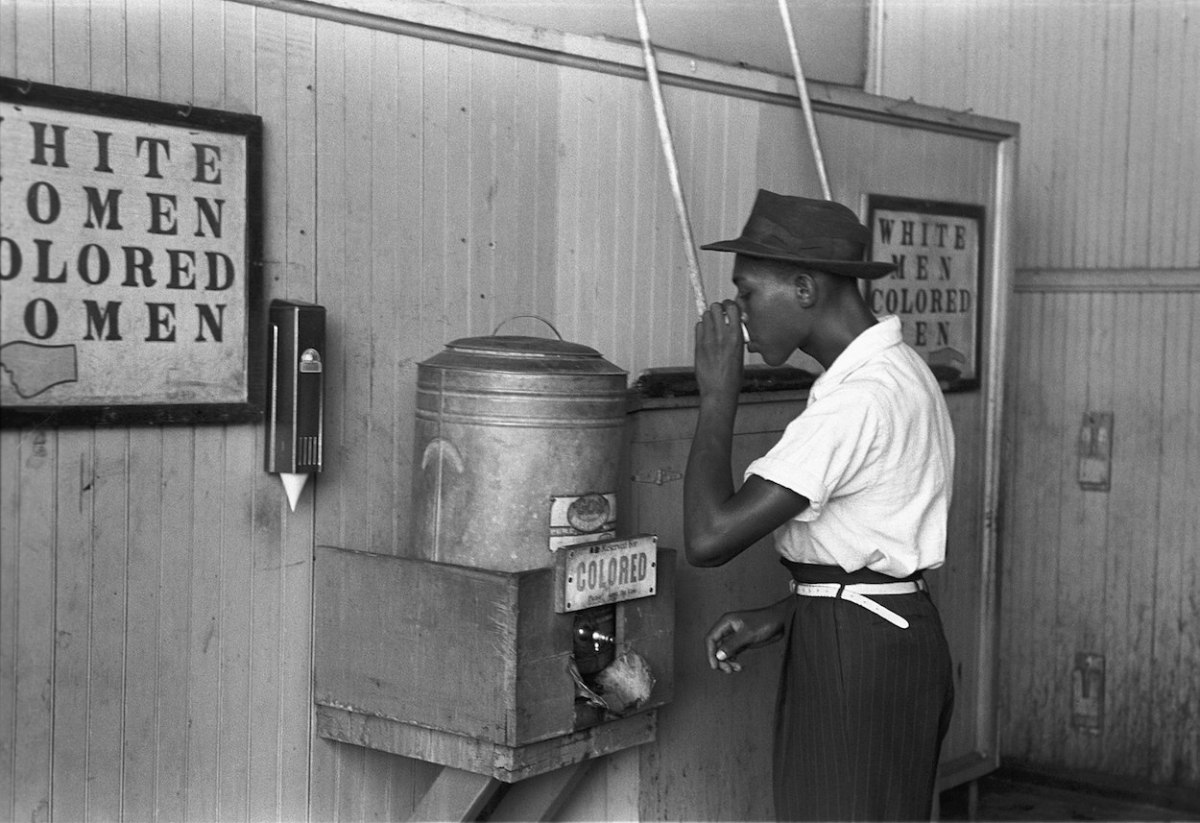[ad_1]
I remember it as if it were yesterday – clamoring for the next bathroom break in the back seat of our family car as we made the 4.5-hour drive south to the nation’s capital. We had our regular stops on this familiar route, and my body became acquainted with the journey’s rhythm.
Even as I ran with urgency toward the bathrooms at the gas station, the imposing metal signs always gave me momentary pause: I had to be sure to pick the right entrance, “Whites†or “Non-Whites.†These signs were a stark reminder to my five-year-old self and to millions of others of our place in society, and of what we were not: white.
The South Africa where I grew up in the 1970s and ’80s found ways of reminding us of this at every turn. Beaches, public bathrooms, post-office entrances, government buildings and even small takeout restaurants displayed signs indicating separate entrances and seating areas – public delineations of privileged access.
The apartheid government established itself on the premise of white superiority. All other races were therefore inferior. The “non-white†shorthand defined me not by my apartheid-designated race of “Indian†but as not being a member of another race. And by assigning the “non-white†catchall label, the government established that white was the standard and the key dividing line of society.
Apartheid reinforced this racial hierarchy in ways subtle and insidious, violent and traumatizing.
Decades and thousands of kilometers removed from that era in South Africa, I find this term from my apartheid-era youth everywhere in the US, where I now live. In newspapers, radio and television, “non-white†is widely employed – even by prominent anti-racist authors. I find it on social media in the threads of people of all races and political convictions.
An Internet search of English-language publications in 2020 reveals that 13,891 articles in newspapers, magazines, scholarly journals, blog posts, podcasts, and webpages used the term “non-white†(or “nonwhite†or “non whiteâ€): The New York Times (332 such articles); the Financial Times (172); The Washington Post (164); The Wall Street Journal, online (132); and The Guardian (80).
I get that “non-white†is efficient, a convenient way to capture the multitude of diversity. But surely I am not the only one troubled by it.
How is it that in 2021, when we have a dynamic and fluid vocabulary to match an increasingly pluralistic culture, we continue to label people as the negative of white? Doesn’t “non-white†reinforce the invisibility of anyone who veers from the not-so-subtly implied “white†standard? That excludes four out of 10 Americans.
I feel differently about another catchall term, “people of color,†because it is both simple and inclusive. I first encountered the phrase in the 1990s, when the environmental justice movement, in response to documented environmental racism, embraced it.
I recall my own sense of solidarity with others who may not have looked like me but were also on the receiving end of a polluter’s toxic cocktail.
The environmental justice movement explicitly included black, indigenous, Latino and Latina, and Asian and Pacific Islander as part of its definition of “people of color,†and the preamble to the Principles of Environmental Justice acknowledges the reality of colonialism and genocide.
As an umbrella term, it’s not perfect, but it’s not premised on what we are not.
Paradoxically, when the “people of color†shorthand is folded into the BIPOC (black, indigenous, and people of color) acronym, it loses its appeal. While it elevates the struggles of black and indigenous people, it inadvertently marginalizes the experiences of everyone else who is not black or indigenous. In this way, the effect is similar to that of classifying others as “non-white.â€
We aren’t going to agree on the ideal terminology for describing racial groups; I am not proposing that we do. Part of the process of developing a healthy society is to be constructively engaged in arriving at what we want to call ourselves and one another.
English is littered with references conflating “white†with positive, clean, and innocent. “White†is a value statement, the de facto norm, the measure – but then what is “non-white� Are we unconsciously reinforcing and messaging who matters?
Language is powerful, and words matter. Let’s use it to lift and inspire. We can do much better, and my plea is simple: Let us relegate the term “non-white†to the archives. While I am not white, I am certainly not non-white.
This article was provided by the Independent Media Institute. An earlier version appeared in The Boston Globe.
[ad_2]
Source link











